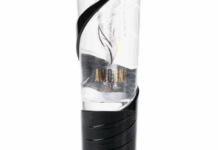Helping you train your emotions like a muscle, with PEM blending acting science, bioelectric patterns, and safer, smarter emotional intensity.
In cities like Los Angeles, Manhattan, Berlin, Hong Kong, and Miami Beach, pressure is part of the lifestyle. You chase awards, big clients, late-night ideas, and fun-loving weekends.
But your nervous system never really gets a day off. That’s where a bold idea comes in: maybe you can train your emotions like a muscle.
PEM — the Perdekamp Emotional Method — starts from a simple but radical premise: emotions aren’t just thoughts. They’re bioelectric movement patterns in your body.
If that’s true, then fear, anger, joy, and grief can be practiced, scaled, and released, just like physical exercise. As founder Stephan Perdekamp puts it:
“emotions are something really helpful.
And there’s something biological, something mechanical that we can learn,
can practice, and that we also can unravel.”
Suddenly, emotional life has a new flavor: part art, part science, part quiet engineering.
What It Means to Train Your Emotions Like a Muscle
PEM began in theater, not therapy.
As a young director in the 1990s, Perdekamp wanted intense performances without wrecking his actors’ mental health. He saw old-school methods that pushed people into trauma, and he refused to keep using them. So he started asking a blunt question: What are emotions, physically?
Instead of digging into sad memories, PEM:
-
Maps each basic emotion to distinct movement patterns in the body
-
Uses access points in the nervous system to switch those patterns on
-
Builds “emotional strength” through repetition, like doing sets at the gym
At the center of this idea—train your emotions like a muscle—isn’t just a metaphor. In PEM, it’s a literal training plan.
PEM Master Instructor Sarah Victoria explains why it grabbed her as an actor:
“you can be emotionally intense and safe at the same time.”
Sarah Victoria
PEM Master Instructor
She talks about playing a character who cuts herself on stage, leaving the audience in tears, but after the show, she can walk off, reset, and prepare for the next scene with no emotional residue.
For high-performing people from Chicago trading floors to Aspen galleries, that level of control has real-world relatability.
The Science: Bioelectric Patterns, Not Just “Feelings”
PEM’s language can sound almost sci-fi: bioelectric movement, triggers, access points. But it lines up with where emotional science is heading.
Modern research shows that emotions involve:
-
Brain regions linked to threat, reward, and social cues
-
Changes in heart rate, breath, posture, and facial muscles
-
Distinct patterns of bodily sensations for different emotions
The American Psychological Association describes emotion as an interplay of experience, physiology, and behavior—not just thoughts in your head. (You can explore that on the American Psychological Association website.)
PEM takes that one step further. It treats emotions as:
-
Stored movement patterns (like built-in choreography)
-
Activated by small electrical signals in specific nerve centers
-
Scalable—turned up, blended, or dialed down on demand
That’s how someone can run “fear drills” on a baseball field with acting students, or mix fear and aggression for a more complex emotional flavor in a scene, without needing to think of a personal tragedy.
It’s also why students around the world, Romania, New Zealand, Germany, the U.S.report that they discover patterns they’ve never felt before, even if they grew up far from war or famine. The system doesn’t depend on background. It depends on biology.
Burnout, Batteries, and Emotional Energy Economy
This is where PEM leaves the studio and walks into everyday life in offices and co-working spaces.
Actors often describe classic “method” work as a fast track to burnout. Anecdotes are brutal: an actor stayed in a crying state all Friday on set, was told to wait until Monday to shoot, and spent the entire weekend holding herself in that grief so she could perform on cue. By Monday, she was done, emotionally and physically.
Perdekamp explains why this is so expensive for the body:
-
Psychological methods ask the brain to pretend it’s in danger for hours.
-
The nervous system responds with real fight-or-flight energy as if the boat is sinking.
-
That energy burns calories and nervous-system resources all day long.
In PEM, the body goes into fear, grief, or aggression, but the mind stays in the room.
When the scene is over, specific release exercises help the nervous system drop the pattern. The actor can plug their emotional batteries back in to rest and restore energy and emotion, the way the camera department plugs in their camera’s batteries to recharge when the day wraps. No overnight emotional toll.
That idea isn’t just for actors. It’s deeply relatable to founders, chefs, curators, and lawyers who live between meetings, events, and late-night texts. When your work and your WhatsApp threads never stop, learning to train your emotions like a muscle becomes an energy strategy, not a luxury.
Beyond the Stage: Stress, Addiction, and Everyday Brains
PEM didn’t stay in the theater.
Friends and family of actors began to notice that people trained in PEM were calmer, clearer, and less anxious. They wanted in.
Over time, PEM:
-
Created large-scale courses for non-actors
-
Developed programs with health institutions in Europe
-
Launched a randomized controlled trial with a research institute in Hamburg to study PEM with people facing substance use disorder
Perdekamp breaks down stress and burnout in simple biological terms: the body stuck between fear and aggression, both patterns trying to use the same muscles, jamming the system. The more the problem doesn’t resolve, the more energy the body throws at it,until it finally gives up and stops sending energy at all.
That’s burnout: the body refusing to get out of bed because it has learned, “If I go there, I will deplete myself.”
PEM’s answer is oddly straightforward:
-
Calm the system and release old, jammed patterns
-
Train aggression and fear separately, with clean exits
-
Give people precise exercises they can keep using for life
Sarah explains what that feels like in daily life: the constant shedding of “tiny little movements” that would otherwise build into stress. She notes that when she’s not stressed, she has more room for others, more empathy, more patience, more sense of humor. Rehearsal rooms without constant anxiety, she says, are wildly more creative.
That’s a fun-loving kind of mental health: not just less suffering, but more space for flavor, collaboration, and play.
Is This Inside-Out or Outside-In?
Whenever a system talks about muscles and mechanics, critics worry it’s “outside-in”, just pulling faces or faking it.
Stephan Perdekamp pushes back strongly.
He explains that PEM starts with muscle movement only as a corridor into something deeper: subtle electrical shifts, and then full emotional patterns. People who only did a short course might think it’s just about flexing, but long-term students learn to move electricity from muscle group to muscle group.
Over time, this grows awareness from below consciousness upward:
“So it’s actually that we start from below awareness and slowly grow into awareness. So it’s more inside-out than psychological methods.”
Sarah adds another key point: because PEM is rooted in biology, not belief, it doesn’t use chakras or spiritual overlays.
“We’re just working purely with the mechanics of the body and the nervous system directly.”
Sarah Victoria
In other words, this isn’t mystical. It’s tech for your nervous system—something that might appeal as much to a Soho engineer as to a Berlin theater artist.
FAQ for PEM’s Training
Q: What does it mean to “train your emotions like a muscle”?
A: It means treating emotions as trainable physical patterns in your body. In PEM, you learn how each basic emotion shows up as a movement and bioelectric pattern, then practice turning it on, turning it up, blending it, and switching it off—much like building strength or flexibility.
Q: Is PEM only for actors and performers?
A: No. PEM began in theater but is now used by non-actors, people dealing with stress, anxiety, burnout, and addiction, and even by clinicians and health projects in Europe. If you live a high-pressure life—whether you run a kitchen in Vegas or a policy team in Washington, D.C.—these tools can help you handle emotional intensity more safely.
Q: Will this make me robotic or less authentic?
A: PEM’s teachers say it does the opposite. By separating personal memories from emotional patterns, you can be more creative, more wild, and more precise, without losing your humanity. You get authenticity in the body, and freedom in the mind—space for timing, choices, and yes, even a bit of fun-loving mischief on set or in the boardroom.
The Upscale Future of Emotional Fitness
PEM points toward a future where emotional skill is treated like physical fitness or craft: something you train, protect, and refine over time. You don’t have to live in constant emotional danger to create powerful work, raise a family, or build a company.
In a world of long flights between LAX and JFK, late dinners in Hong Kong, and rooftop events in Atlanta, the idea that you can train your emotions like a muscle feels surprisingly sane. It carries its own stylish flavor of self-care—equal parts rigor, relatability, and respect for your nervous system.
If you’ve ever wished for more control over your inner life without losing your sense of humor or your fun-loving edge, this may be your next frontier.
PEM helps you train your emotions like a muscle, blending acting science, bioelectric patterns, and safer, smarter emotional intensity.


















![Get Your Indie Movie Made (Responsibly): Jeff Caruso of Wrapbook Leads the AFM 2025 Film Finance Conversation [Exclusive Interview] American Film Market](https://dailyovation.com/wp-content/uploads/2025/11/AmericanFilmMarket2025-1-218x150.jpg)














